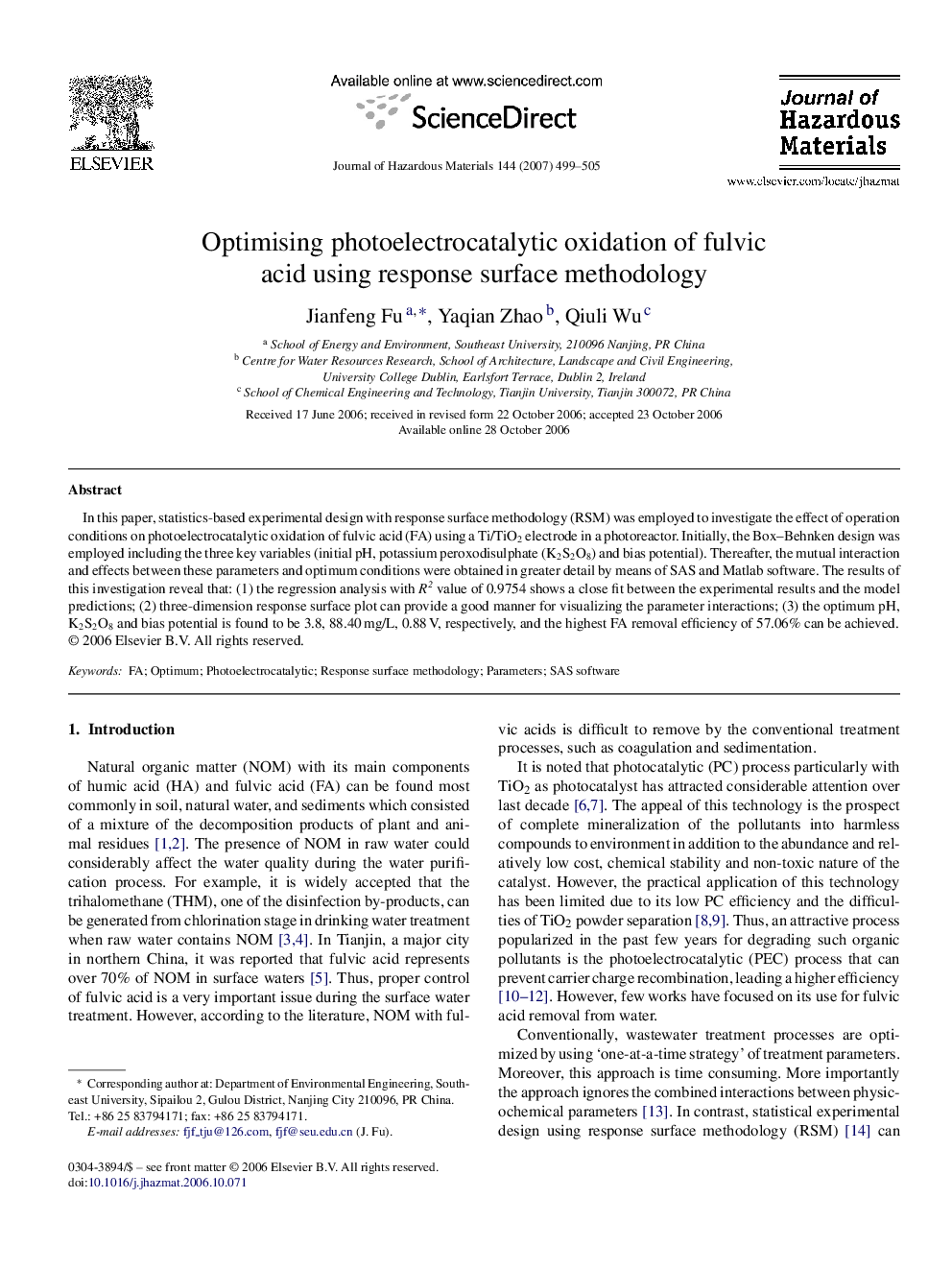| Article ID | Journal | Published Year | Pages | File Type |
|---|---|---|---|---|
| 584501 | Journal of Hazardous Materials | 2007 | 7 Pages |
Abstract
In this paper, statistics-based experimental design with response surface methodology (RSM) was employed to investigate the effect of operation conditions on photoelectrocatalytic oxidation of fulvic acid (FA) using a Ti/TiO2 electrode in a photoreactor. Initially, the Box-Behnken design was employed including the three key variables (initial pH, potassium peroxodisulphate (K2S2O8) and bias potential). Thereafter, the mutual interaction and effects between these parameters and optimum conditions were obtained in greater detail by means of SAS and Matlab software. The results of this investigation reveal that: (1) the regression analysis with R2 value of 0.9754 shows a close fit between the experimental results and the model predictions; (2) three-dimension response surface plot can provide a good manner for visualizing the parameter interactions; (3) the optimum pH, K2S2O8 and bias potential is found to be 3.8, 88.40Â mg/L, 0.88Â V, respectively, and the highest FA removal efficiency of 57.06% can be achieved.
Related Topics
Physical Sciences and Engineering
Chemical Engineering
Chemical Health and Safety
Authors
Jianfeng Fu, Yaqian Zhao, Qiuli Wu,
